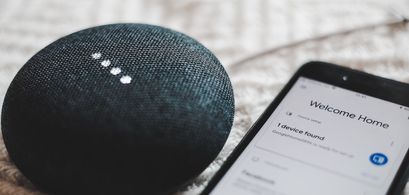Impressed by their safety features, advanced controls, and overall convenience, consumers worldwide are increasingly investing in smart home devices. In this overview of the latest smart home statistics, we’ll closely examine the current state of the global market. We’ll also look at the most popular smart home products across several categories. Finally, we’ll discuss the key demographic characteristics of smart home owners — globally and in the US.
Top 10 Smart Home Statistics and Facts for 2023
The smart home sector was valued at $78.3 billion globally in 2022.
Consumer spending on smart home devices in 2022 reached $127 billion.
In 2022, the smart home revenue in the US was estimated at $31.45 billion.
There were 259.89 million smart households worldwide in 2021.
In 2021, the US had 52.22 million smart homes.
895 million smart home devices were shipped worldwide in 2021.
At $44.25 billion, smart appliances were the most valuable market segment in 2022.
As of Q3 of 2022, 16.4% of people worldwide owned a smart home device.
In H1 of 2022, an average home had 17.1 connected smart devices.
Young millennials aged 25–34 are most likely to own a smart home device.
Smart Home Market Statistics
The smart home sector was valued at $78.3 billion globally in 2022.
At 42.3%, the US holds the largest share of the market. Meanwhile, Europe accounts for 20.4% of global smart home solutions sales. Driven mainly by the increasing demand and adoption of the technology and a rising interest in energy-saving solutions across the globe, the market will keep growing in the coming years. By 2032, the global smart home device market will be worth nearly $250.5 billion, growing at a compound annual rate of 12.3% over the next 10 years.
(Future Market Insights)
Consumer spending on smart home devices in 2022 reached $127 billion.
In 2021, consumers worldwide spent $123 billion on smart home devices — a massive 43% increase from $86 billion in 2020. But the economic uncertainty caused by the war in Ukraine halted the market’s growth, resulting in a comparatively small 3.2% year-over-year rise in 2022. Experts predict the market will gradually pick up, though. By 2023, global consumer spending on smart household electronics should reach $204 billion, growing by 60.6% over five years.
(Statista)
In 2022, the smart home revenue in the US was estimated at $31.45 billion.
The projected revenue breaks down to $8.8 billion in smart appliances, $7.43 billion in control and connectivity, $5.43 billion in security, $3.34 billion in home entertainment, $3 billion in comfort and lighting, and $2.88 billion in energy management. The US smart home technology revenue should grow at an annual rate of 10.22% by 2027, eventually reaching $52.19 billion.
(Statista)
There were 259.89 million smart households worldwide in 2021.
Between 2017 and 2021, the number of smart households around the globe grew by 83.1% — from just 141.91 million at the beginning of this period. Analysts predict this positive trend will continue until at least 2025, when the number will reach 478.22 million. According to these projections, the number of smart homes worldwide could grow by 84% over just four years.
(Statista)
In 2021, the US had 52.22 million smart homes.
For comparison, there were 35.39 million smart homes nationwide in 2017, pointing to a 47.5% increase over four years. Like the global market, the domestic market is projected to continue growing at the same pace over the coming period. According to a recent analysis, the number of smart households in the US will see another 47.5% increase by 2025, reaching 77.05 million.
(Statista)
Smart Home Device Statistics
895 million smart home devices were shipped worldwide in 2021.
Statistics point to an 11.7% increase in global smart home device shipments compared to 2020. The North American market accounted for the largest share of the shipments in 2021, posting an 11.4% year-over-year increase, while second-placed Asia-Pacific saw a 10.8% rise. Western Europe (+14.8%) and Latin America (+11.2%) also made the list of the fastest-growing markets.
(IDC)
At $44.25 billion, smart home appliances were the most valuable market segment in 2022.
The value of smart appliances was up by 12.4% from $39.38 billion in 2021. Smart home control and connectivity devices ranked second at $23.18 billion in 2022, up by 11.7% from $20.76 billion the previous year. Meanwhile, security devices generated $17.41 billion (+10.8%), home entertainment devices raked in $12.11 billion (+4.4%), comfort and lighting equipment generated $9.65 billion (+10.4%), and energy management equipment generated $9.07 billion (+10.3%).
(DataReportal)
As of Q3 of 2022, 16.4% of people worldwide owned a smart home device.
Smart home stats from a recent survey of internet users aged 16–64 reveal the UK has the highest device ownership rate at 24.9%. Ireland follows closely in second with 24.4% of internet users who own some form of smart home device, while the US ranks third at 24.3%. China (23.2%), Canada (23.1%), Spain (21.5%), Italy (20.5%), and Turkey (19.1%) also made the list.
(DataReportal)
In H1 of 2022, an average home had 17.1 connected smart devices.
The average number of smart home devices in a home was up by 10% from 15.5 in 2021’s first half. Unsurprisingly, Americans had the highest number of connected devices — at 20.2, it was up by 8.5% year-over-year. Europe also surpassed the global average with 17.4 connected devices per household. At 12.8%, the region saw the highest year-over-year growth, as well.
(Plume)
Cameras were the fastest-growing smart home product in H1 of 2022.
Compared to 2021’s first half, there were 55% more cameras, making them the fastest-growing smart home appliance worldwide. Other products that saw a massive increase in sales include smart doorbells (+43% year-over-year), smart hubs (+38%), smart light bulbs (+25%), smart speakers (+24%), smart plugs (+23%), smart TV sets (+22%), and smart thermostats (+19%).
(Plume)
Smart Home Popularity Statistics
Apple was the world’s leading smart home device brand in 2022.
As of 2022’s first half, 91.9% of households worldwide had at least one Apple-branded smart device. This puts the tech giant far ahead of its competitors — Microsoft (72.8%), Samsung (68.7%), Amazon (57.9%), and Google (43.7%). Apple also has the most loyal user base, with 39.1% of households owning 10 or more of its devices. In this respect, all other brands are in the low single digits: Samsung at 4.9%, Amazon at 2.6%, Microsoft at 2%, and Google at 1.1%.
(Plume)
Smartphones are the most popular smart home devices for personal use.
Smart home consumer trends from a 2021 survey point to smartphones as the most popular devices for personal use, with 85% of Americans owning one. Other popular devices in this category include headphones (32.5% ownership rate), smartwatches (26%), tablets with voice control features (23.5%), tablets without these features (23.4%), and fitness trackers (18.9%).
(Reviews.org)
Smart speakers are the most popular devices for the living room.
With 35.6% of Americans owning a smart speaker, these devices are more common than smart TVs (25.7% ownership rate). Other popular smart devices for the living room include gaming consoles (25%), hubs with built-in screens (21.5%), remotes (9.1%), and robot vacuums (6.6%).
(Reviews.org)
Smart fridges are the most popular devices for the kitchen.
Smart home facts reveal that 4.7% of Americans own a smart fridge, making it more popular than other smart kitchen appliances — smart dishwashers (4.2% ownership rate), ovens (4.2%), microwaves (4.1%), coffee makers (3.4%), kitchen scales (3.3%), and faucets (2.5%).
(Reviews.org)
Smart washing machines are the most popular devices for the bathroom.
Research reveals that 5.2% of Americans own a smart washing machine, putting this device ahead of smart dryers (4.1% ownership rate) and smart toothbrushes (3.6%). Other popular smart devices for the bathroom include mirrors (2%), skincare systems (2%), and bidets (1.8%).
(Reviews.org)
Laptop computers with smart assistants are the most popular smart devices for the office.
According to smart home popularity stats, 23.5% of Americans own laptop computers with smart assistants. Other commonly owned smart devices in the office equipment category include smart printers (17.5% ownership rate) and desktop computers with smart assistants (14.9%).
(Reviews.org)
Video doorbells are the most popular smart devices for home security.
With 14.6% of Americans owning a video doorbell, these devices are more popular than outdoor security cameras (12.3% ownership rate), indoor security cameras (9.3%), motion detectors (8.9%), and smart door locks (8.2%). Other popular smart devices for home security include smoke detectors (7.6%), door and window sensors (7.2%), security hubs (4.8%), air quality monitors (4.6%), moisture sensors (2.7%), pet monitors (2.7%), and child monitors (2.6%).
(Reviews.org)
Fitness scales are the most popular devices for health and fitness.
Smart home technology statistics show that 5.2% of Americans own a smart fitness scale. Home gyms rank second with 2.5% of Americans owning them. At 2% each, smart treadmills and exercise bikes are also among the most commonly owned smart home devices for fitness.
(Reviews.org)
Garage door openers are the most popular devices for outdoor use.
With 13.8% of Americans owning them, garage door openers are far more popular than other outdoor smart devices, all of which are in the single digits. These include smart gate locks (3.6% ownership rate), sprinkler control systems (3.4%), outdoor lighting systems (2.6%), outdoor weather stations (2.4%), holiday light displays (2%), mailboxes (1.6%), and padlocks (1.6%).
(Reviews.org)
Smart Home Demographics
Men are much more likely than women to embrace smart home technology.
According to data from a 2020 survey, 82% of men in the US owned a smart home device, compared to just 49% of women who owned one. Moreover, 71% of US men said they were considering buying another smart device within the subsequent six months at the time of the survey. That’s more than twice the share of female respondents (34%) who said the same.
(ValuePenguin)
Young millennials aged 25–34 are most likely to own a smart home device.
Smart home usage statistics reveal that 19.5% of internet users aged 25–34 owned at least one smart home device in 2022. People aged 35–44 ranked second with an 18.7% ownership rate, those in the 45–54 age group finished third with 16.4%, and users aged 55–64 finished fourth with 13.2%. Surprisingly, despite generally being quick to embrace new technologies, Gen-Zers aged 16–24 are least likely to own a smart home device — only 12.2% owned one in 2022.
(DataReportal)
Most smart home owners in the US are in the high-income bracket.
Considering the relatively high smart home cost, it’s no surprise that 39.6% of American smart home owners have an annual household income that qualifies as high. However, the disparity among income brackets isn’t that big. Namely, 31.8% of US smart home owners fall into the medium-income bracket, while 28.7% have an annual household income that qualifies as low.
(Statista)
74% of Americans who are concerned about climate change own a smart home device.
Many Americans see eco-friendliness as one of the main benefits of smart homes. To that point, 74% of those who are concerned about climate change and 58% of those who are somewhat concerned about the issue own smart home devices. Moreover, 49% of US consumers said they would be willing to pay more for smart home devices to be more environmentally friendly..
(ValuePenguin)
Smart Home Stats: The Takeaway
After posting record-high numbers in 2021, the smart device market managed to maintain its momentum in 2022. Currently valued at $78.3 billion, the global smart home sector is expected to grow by more than three times over the next 10 years, reaching $250.5 billion by 2032.
Statistics on smart home users show that their number is increasing each year, as is the number of connected devices per household. Besides security and convenience, people are investing in smart homes to do their part in the global fight against climate change. On that note, 49% of Americans say they would pay even more for smart devices to be more environmentally friendly.
Smart Home Statistics FAQ
How big is the smart home market?
How many smart homes are there in the world?
How many homes in the US have smart devices?
Sources:




.jpg)
.jpg)

